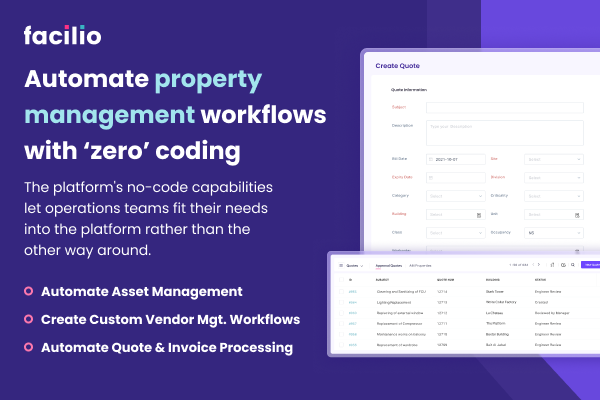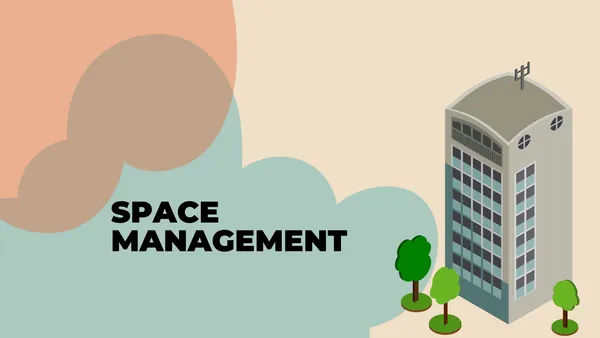A recent study by Density reports 71% of office spaces “could support four times their actual usage.”
The study found that advanced or remodeled features in office buildings were severly underutilized, including “multiple 22-person spaces that were consistently used by just one person, social spaces intended for 100+ people that were used by three, and a conference room that costs $87,000 annually yet is empty more than 80% of the time.”
That's a massive cost for empty spaces.
Space management plays a vital role in optimizing physical space utilization, whether in our homes, offices, or public areas.
Proper space management offers numerous benefits, from improving workflow and minimizing clutter to enhancing collaboration and creativity.
This article delves into the art of space management, exploring its importance, key principles, and practical tips for creating functional and inspiring spaces.
What is space management?
The three basic elements of space management are:
- Effective space planning
- Effective implementation
- Effective tracking and reporting
Why is space management important?
Space management helps companies strategically solve space utilization challenges and create a better workplace experience. Space management software collects and tracks real-time occupancy data from occupancy sensors.
You can integrate Facilio with a building management system to gain real-time data from HVACR systems and also a range of IoT sensors for occupancy, weather, and operating conditions to help you keep indoor environments at their most productive.

Prioritize space management planning to:
- Understand how your company uses physical space
- Access and analyze real-time space data for insights
- Ensure efficient space use and reduce operational costs
- Create a pleasant and productive environment to attract and retain talent
To keep employees productive, you need a system for managing all spaces, from meeting rooms to parking lots to desks to floor plans.
Thoughtful space management drives employee efficiency.
Businesses use workplace management software or space management software to track office space usage, analyze occupancy data, maintain physical spaces, forecast real estate needs, and strategize floor layouts.
- Occupancy management: Controls visitor flow and venue occupancy to ensure that there’s little-to-no wasted space.
- Move management: Executes different phases of moving people, assets, and equipment to a new location.
- Maintenance management: Tracks and manages physical assets to improve asset life cycles, minimize deferred maintenance, and reduce maintenance costs.
- Property management: Oversees regular real estate operations and addresses tenant concerns.
- Asset management: Optimizes tangible and intangible assets’ operational performance.
How does Space management work?
Space management is about managing facilities to meet safety regulations and business objectives while supporting user needs.
If you want to align people, places, and processes, follow the space management process below to get started.
1. Take inventory of your space
Managing spaces starts with understanding them. Take a good look at your office space and facility to understand what can be better.
Start by finding out:
- Total workplace capacity
- Different workplace technologies
- Total square feet of space you own
- The function of individual spaces and the technologies they have
- The capacity of individual spaces, i.e., meeting rooms, kitchen, common area, reception, etc.
Now, time to enhance your space with the right tools.
2. Integrate space management tools
The right tools make creating an environment that meets business and employee needs easier.
You can collect and analyze spatial data using space management software solutions to understand how people use the workplace. Keep an eye on those trends and preferences to support employees.

To cater to peoples' needs, you can also integrate space management systems with a visitor management software for manage desk booking, meeting room scheduling, visitor sign-in, and parking reservation.
3. Understand employee preferences
People-first organizations prioritize surveys to understand better how employees use workspaces.
You can also do so gauge what people need to be more efficient. Some common questions you can ask include:
- What do you like most about the workplace?
- What spaces do you use the most and least at the office?
- Which space helps you to remain productive at work?
- Can we improve the workplace in any way to help you be more efficient?
To kick the experience a notch higher, give your occupants easy ways to raise requests, compliants, and vendor service requests with a simple mobile app like Facilio.

Real-time issue resolution in office spaces not only keeps tenants happy, but ensures your spaces are healthy, safe, and productive at all times.
Now that you know what it takes to engage occupants, it’s time to outline goals, monitor, and make continuous improvements.
4. Set goals, monitor, and improve
Start by setting key performance indicators (KPIs) to measure success.
For example, you may want to keep enough meeting rooms available at all corporate facilities. You can track this by letting people reserve rooms ahead of time, so there’s no conflict.
Also, monitor if people are using the right tools. Don’t forget to ask employees for feedback as you make iterative changes to your spaces.
Want to take space and occupancy planning to the next level? Keep reading.

Principles of space management
The right space management tool tells facility managers where best to let employees sit.
Once you’ve done the initial space planning, implement these space management principles to get the most out of workplace environments.
- Assess properties annually: Analyze each facility annually to see if your workplaces need a new strategy.
- Evolve workspace with each project: Consider each change activity as an opportunity to improve the workplace environment.
- Leverage technology: Whether it is pre-project planning or improvements you're making on the fly, be sure to use the right space management software to guide your initiatives and day-to-day operations.
- Analyze space data: Collect and interpret space consumption and use data to make operational decisions. Gather relevant data that forecasts potential changes to present a strong business case to stakeholders.
- Use recognized industry standards: Applying recognized space management standards from the Open Standards Consortium for Real Estate (OSCRE), Building Owners and Managers Association (BOMA), or International Facility Management Association (IFMA) will help you define and manage portfolio rules better.
- Fuel decision-making with real-time data: Use real-time occupancy change data to provide users with accurate reports and stay compliant with workplace policies.
Facility and office managers follow these principles to supervise business real estate or physical assets and ensure peace of mind for their employees or tenants.
Once you go through all these with space management software, you will reap multiple benefits – let’s take a quick look.
Also read: A complete guide to O&M manuals
Benefits of space management
A strategic approach to space management helps you boost space efficiency, improve workforce productivity, minimize vacant space, better expand or shrink office space, save operational costs, and remain compliant.
Below are some benefits you can expect from space management software solutions.
1. Save overhead costs
Poor space planning adds to business expenses. Space management tools analyze space utilization data to help you identify underperforming or unused spaces and the cost associated.
For example, you can use building entry, room booking, or smart building sensor data to find the right-sized space for your team.
Additionally, you can share a location with another business to save money on resources, equipment, facility management, and parking space.
2. Boost workplace efficiency
Space management makes you constantly look for opportunities to improve the flow of things around your workspace.
Creating a baseline for improvement begins with auditing your floor plan configuration.
Then you can consider whether you need to adopt cloud storage programs like Google Drive, update other technologies, or make better equipment choices.
3. Improve employee productivity
An overcrowded space or too much isolation can hurt employees’ productivity levels. Configuring spaces and building facilities right from the start is key to building a successful business.
Space management software helps you design office layouts in a way that saves you money and keeps employees productive. Further, it helps you ensure employees have the spaces they need at all times.
4. Create a thriving company culture
A great space design fosters employee interactions and helps you build a great company culture.
Think about all the team bonding events, collaboration, and happy hours that happen at your workplace.
Employees will feel more connected to your company culture when you have the right space to host those experiences.
5. Facilitate adaptability
Gone are the days of crammed-in cubicles and locked-down desks. As more employees opt for flexible working, you must be ready to keep up with changes. Plus, workplace regulations change all the time.
Space management software provides you with the right office space planning tools to handle such changes. With real-time data, workplace admins can predict situations and make necessary adjustments to ensure the best workplace experience and safety.
Suggested read: Building automation needs innovation big time (and it’s all coming together finally)
Common challenges with space management
Space management planning and execution can be quite challenging, but you can avoid some common pitfalls with the right approach.
One common pitfall is inadequate data gathering and analysis. Gathering accurate and comprehensive data about the space you're managing is essential, including its dimensions, capacity, and utilization patterns.
Take the time to conduct thorough surveys and inspections, collect data on occupancy rates, and analyze trends to understand the space's actual needs.
Delegate data collection and analysis to efficient space management software so you can focus on optimizing operations and costs, thanks to the real-time data you get access to.
Another pitfall is failing to consider flexibility and scalability. In today's dynamic world, spaces need to be adaptable to accommodate changing requirements. Planning for future growth, technological advancements, and evolving needs is crucial.
Considering flexibility in your space management strategy, such as modular furniture, flexible layouts, and scalable infrastructure, you can ensure that your space remains functional and efficient in the long run.
How has space management changed since the pandemic?
The pandemic has forced companies of all sizes to adopt new working methods. Check out these hybrid space management approaches to create a productive, safe, and enjoyable workspace for employees.
- Help remote employees: With more people working at home at least once a week, you need to help them be productive. Start by implementing flexible space management strategies such as hot-desking, office hoteling, and activity-based working.
- Adopt new technologies: It's best to use technologies to manage space occupancy when limiting office occupancy due to distancing norms. For example, you can start using visitor management systems to track visitors or desk booking software to help employees find workspaces quickly.
- Create the right mix of space: As some employees return to the office to meet and collaborate with colleagues, you need dedicated spaces for work and collaboration. Consider creating huddle areas and meeting room booking systems to help employees get the most out of collaboration.
- Reserve desks for teams: Some teams may visit the office together on specific days for collaboration and team building. Allowing them to reserve space or desks ahead of time will help you limit capacity on those days.
- Open satellite offices: Employees want to avoid daily commutes to save time and money but want more in-person interactions. That’s why businesses are looking to create smaller office spaces in the suburbs. As a result, employees will be able to reduce commuting expenses while still getting to meet colleagues once in a while.
Create happy and productive spaces, not cubicle farms
Every company owns offices, but very few see them as opportunities to create human-centric workspaces.
With the right space management tool and strategy, you can seamlessly combine remote and on-site work and create a culture people love.


